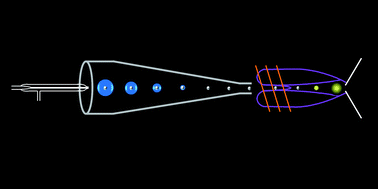Considerations for measurement of individual nanoparticles or microparticles by ICP-MS: determination of the number of particles and the analyte mass in each particle
Abstract
The unique considerations to determine the number of particles per liter and analyte mass (particle size) distributions from single particle ICP-MS measurements with quadrupole or sequential sector field mass spectrometers are discussed. The short, transient nature of signals from single particles affects the optimum selection of dwell times and pulse counting versus analog detection. The signal peak width due to a cloud of ions produced from a single particle also limits the maximum number of single particles that can be accurately measured in a given total measurement time and the dynamic range of the particle number concentration. The range of analyte mass (particle size) measurements is limited by the rates of vaporization and diffusion. Approaches to calibrate the number of particles detected as a function of the number of particles per mL and to calibrate the signal from a single particle as a function of analyte mass are discussed. Measurement of particle diameter distributions for spherical, solid particles are assessed.

- This article is part of the themed collections: Nanoanalysis and 5 years of nanomaterial analysis by means of ICP-MS

 Please wait while we load your content...
Please wait while we load your content...